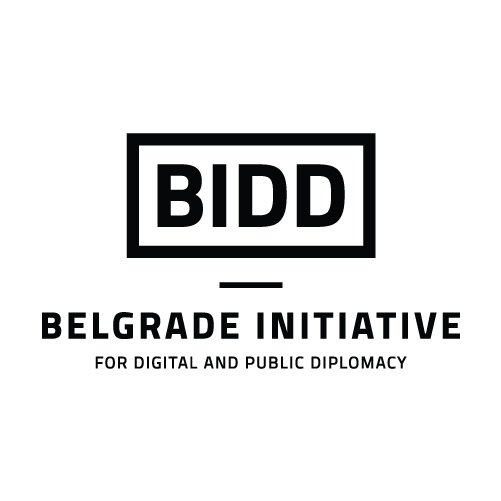Amid the intense competition between China, the United States, and Russia in the field of cybersecurity and the development of artificial intelligence technologies, Washington has ensured its technological imprint worldwide. Hence, an international strategy for cyberspace and digital space was announced by US Secretary of State Antony Blinken during the “RSA” conference held in May 2024 in San Francisco, which included
cybersecurity experts and technology enthusiasts. He said, “Today’s technological revolutions are at the heart of our competition with geopolitical rivals,” explaining the goals of the strategy by saying, “Our ability to design, develop, and deploy technologies will determine our ability to shape the future of technology. Naturally, working from a position of strength puts us in a better position to set and develop standards worldwide. But our advantage comes not only from our domestic strength; it comes from our solidarity with the majority of the world that shares our vision for a vibrant, open, and secure technological future, and from an unparalleled network of allies and partners we can work with for a common cause.”
Washington’s Objectives
The strategy announced by the State Department, titled “United States International Strategy for Cyberspace and Digital Policy: Towards an Innovative, Secure, and Rights-Respecting Digital Future,” is based on a set of principles and goals, focusing on several areas of action through which Washington aims to enhance global
cybersecurity. The Biden administration had previously issued a national
cybersecurity strategy in March 2023, followed by an executive plan in June 2023, and a cybersecurity strategy document from the Department of Defense in September 2023. The following outlines the objectives and principles of the US State Department’s strategy:
Enhancing Digital Diplomacy and “Digital Solidarity”: The US State Department announced the “Digital Solidarity Principle,” a key principle the new strategy aims to establish. The strategy aims to enhance the role of digital diplomacy through cooperation in the digital space to form new international alliances with countries that share the United States’ principles related to providing an “open, inclusive, secure, and resilient internet.”
Keeping the US at the Forefront of Global Technological Leadership: The strategy reflects the US’s commitment to maintaining its technological superiority, ensuring it leads the global technological leadership, amid accelerated efforts by Beijing and Moscow to surpass Washington in the digital space. It also focuses on transferring American technological expertise to allies and benefiting from their expertise.
Proposing Principles for Regulating Cyberspace: The official website of the US State Department revealed three main principles the American strategy aims to achieve, consisting of a cyberspace that respects international law, individual privacy, and security, integrating efforts to achieve the seventeen sustainable development goals with efforts to secure a safe cyberspace based on technological innovation, and formulating a “comprehensive policy” that employs various diplomatic means in a flexible global digital space capable of facing and quickly recovering from crises, alongside the ability to punish hackers and intruders who aim to harm the cybersecurity of states, necessitating the enhancement of states’ cybersecurity capabilities.
Reasons for the Issuance
Several motivations and drivers encouraged the United States to issue this strategy to create institutional frameworks through which digital space governance can be achieved. Here are the main motivations and drivers:
Securing American Cyberspace: Despite Washington’s preoccupation with the wars its allies are fighting worldwide, particularly in Ukraine, Israel, and Taiwan, it pays great attention to the surrounding cyber risks, given the repeated attacks on its vital cyber infrastructure, including gas lines and healthcare systems, by Washington’s adversaries, primarily Moscow, Tehran, Pyongyang, and Beijing. Hence, this strategy aims to enhance the security of American cyberspace.
Achieving Electoral Gains: With the American elections approaching in November 2024, the administration aims to secure two main objectives: ensuring the security of the upcoming elections and protecting them from any attempts of foreign interference, amidst increasing concerns about the potential influence of Moscow, Beijing, and Tehran on American voters. Additionally, achieving a new milestone to promote, showing the administration’s commitment to
cybersecurity and strengthening global partnerships as promised during President Biden’s 2020 campaign.
Countering US Adversaries: The US seeks to counter the growing influence of regimes it describes as “repressive” and “authoritarian,” particularly Beijing and Moscow, viewing these regimes as attempting to reshape the international order and violate various human rights, including individual privacy through the digital space. Therefore, it aims to govern digital space and establish foundations for holding accountable errant parties and correcting digital behavior, which the US administration believes ultimately serves global interests while protecting its national security and political and economic interests worldwide. This was emphasized by Nathaniel C. Fick, the US Ambassador at Large for Cyberspace and Digital Policy, highlighting Washington’s efforts to rally a global team to combat violations by Beijing or Moscow.
Building on Previous US
Cybersecurity Efforts: This strategy is not the first of its kind for the US. It previously launched the Ransomware Initiative in 2021, joined by over 60 countries, and several countries signed a treaty aimed at “limiting the misuse of commercial spyware.” In 2022, Nathaniel C. Fick was appointed the US Ambassador at Large for Cyberspace and Digital Policy, who said, “For two years, we had an office in the State Department focused on these issues. We had a person with the title of ambassador representing us broadly on these issues. It’s an attempt to integrate and elevate our diplomatic approach to these matters.”
Additionally, Albania and Costa Rica received up to $25 million from Washington to help them recover from cyber-attacks by Tehran and Moscow. The US also cooperated with Australia, New Zealand, Japan, and Taiwan to provide internet services to up to 100,000 people in the Pacific region through the establishment of an undersea internet cable. Therefore, this strategy is Washington’s attempt to build on the efforts it has implemented over the past years.
In conclusion, the timing of this strategy’s issuance is highly sensitive given the intense global competition. However, its success depends on the US’s ability to impose its principles outlined in the strategy, particularly a secure digital space that respects individual rights and privacy. Nevertheless, Washington’s desire to ban some foreign-owned Chinese applications, like TikTok, while possessing other applications that infringe on individual privacy, raises questions about Washington’s credibility in creating a safe digital space that attracts partnerships with countries holding similar visions. Moreover, Washington’s adversaries—primarily Moscow and Beijing—spend heavily on developing their digital capabilities, casting doubt on the US’s goal of leading global technological leadership.
What are the Features of the New US Cybersecurity Strategy?


























